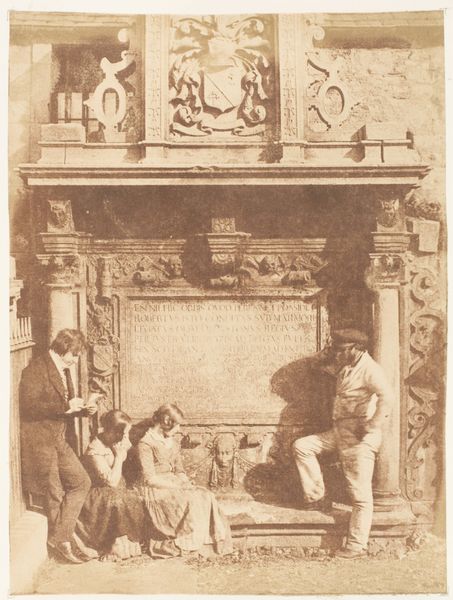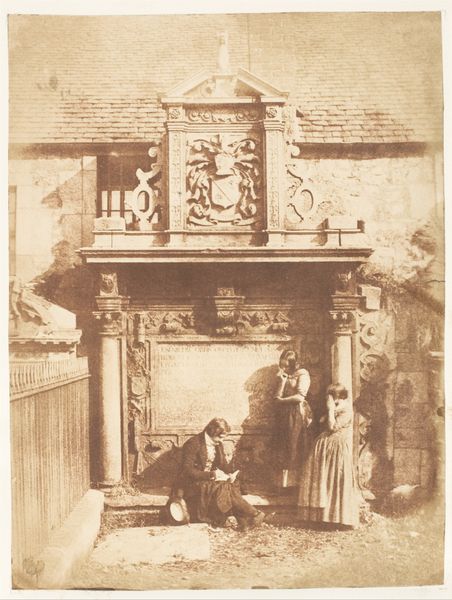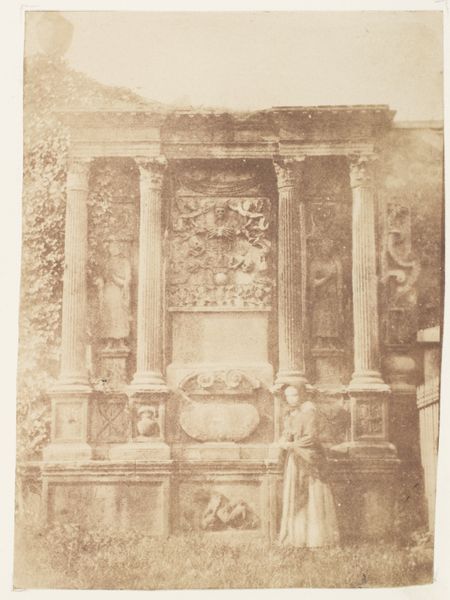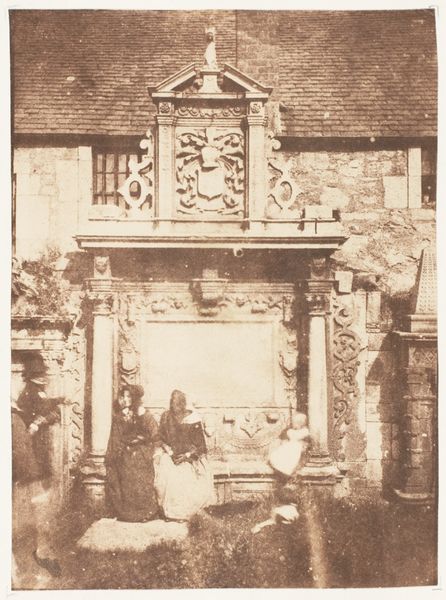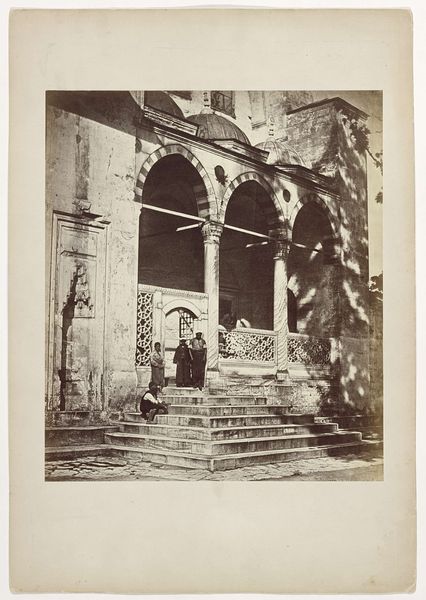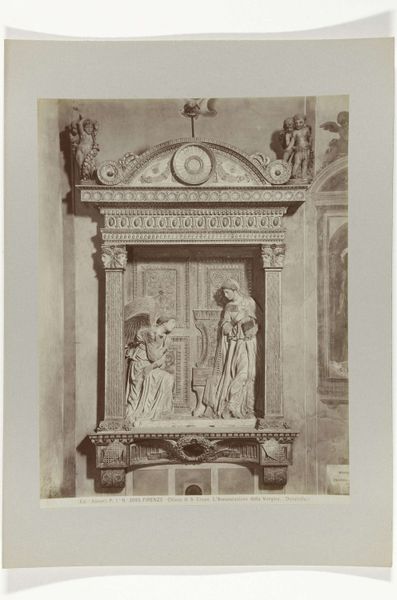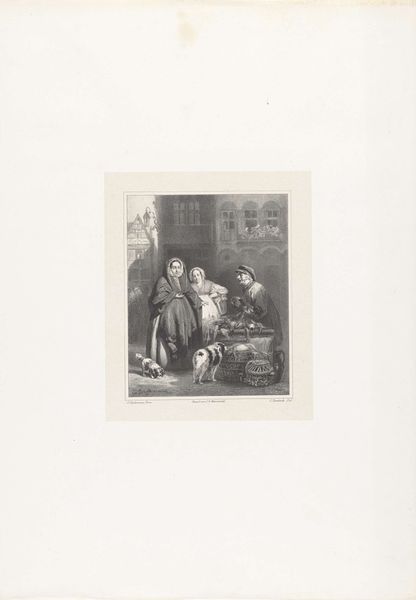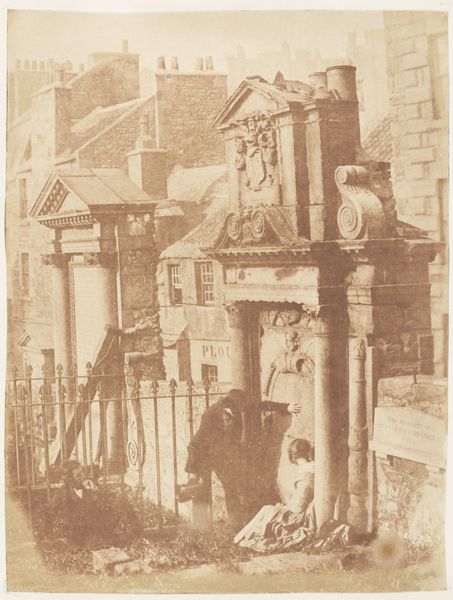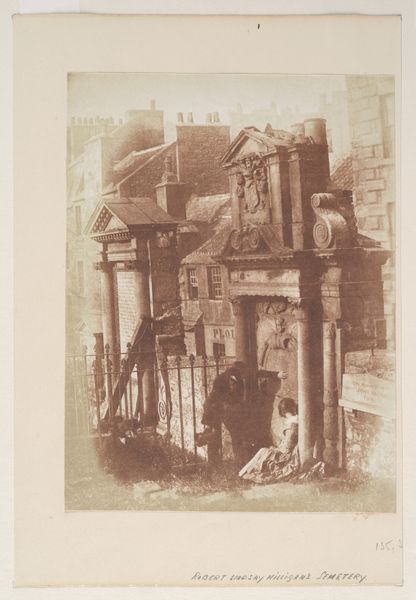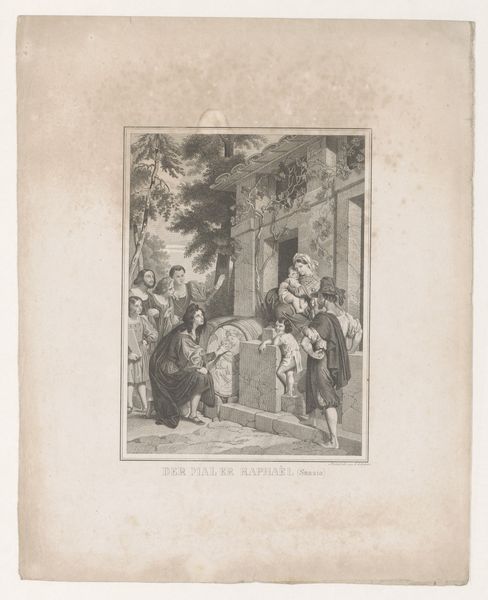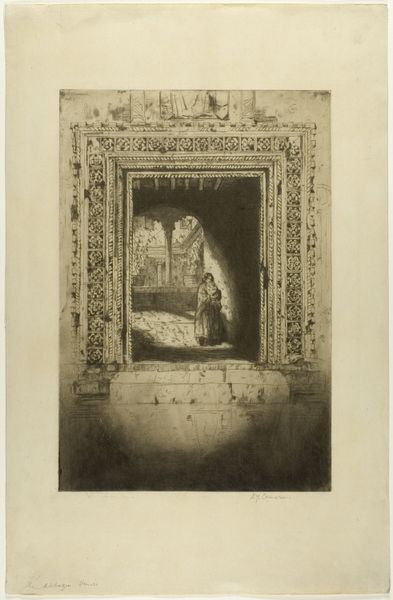
daguerreotype, photography
#
portrait
#
daguerreotype
#
photography
#
romanticism
#
genre-painting
#
building
Copyright: Public Domain
Curator: Before us is "Edinburgh. Greyfriars' Churchyard," a haunting photograph produced between 1843 and 1847 by the pioneering Scottish duo, Hill and Adamson. It's currently held here at The Metropolitan Museum of Art. Editor: My first impression is…wistful. The sepia tones give it this incredible antique feel. Like looking into a very old, sepia-toned memory. It feels romantic, maybe even a bit mournful, with these figures amongst the aged stones. Curator: That romantic mood aligns perfectly with the artistic currents of the time. Genre painting was coming into its own and portraiture especially. Remember this image comes from a period when photography was in its infancy; Hill and Adamson were true pioneers. The use of the Daguerreotype is particularly notable; creating such delicate and enduring records. Editor: Delicate is right! Look at the incredible detail though, even with the limitations of the technology. The way the light filters through the trees, highlighting parts of the architecture. Almost as if time itself is creating layers upon layers of meaning in this one scene. Curator: And the churchyard itself…Greyfriars is steeped in history. Its associations with Scottish Covenanting history added another layer to the visual impact, didn't it? Making this not just a picturesque scene, but a place laden with potent religious and political connotations. The placement of these figures within that frame is quite striking. Editor: Absolutely! It's as if they are interacting with history, becoming part of the story unfolding there. The guy seated is quite obviously reading something but seems melancholy perhaps about the graveyard around him. The chap beside him appears deeply in thought, observing the whole setting, as though considering our own mortality. It evokes that familiar sense of being small, timeless against grand themes. Curator: A vital point. In these photographic images Hill and Adamson crafted, one can glimpse both the specific atmosphere of 19th century Edinburgh, and enduring aspects of the human condition as it contemplates historical memory and the passage of time. Editor: And in doing so, these pioneers helped frame, in more ways than one, how we’d engage with both our past and present from then on. A beautiful reflection.
Comments
No comments
Be the first to comment and join the conversation on the ultimate creative platform.
